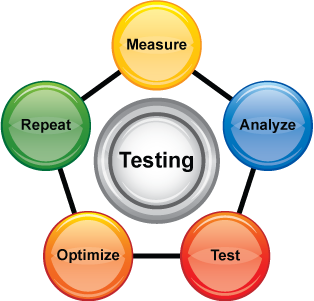
Some difficulties in assessing language learners imply the issues regarding invisible skills such as reading and luistening, since we cannot see the process in our students´ minds. That is why we must consider construct models or models of receptive skills to design assessment. A relevant aspect to take into account is the importance of reading in the overall institutional assessment of our learners.
Reading is a complex skill that is challenging to those who assess. It is fundamental for most overall assessments at the K-12 levels in USA, and a mayor component in an intensive English program for students´success in tertiary level of education, while it is not important in conversational classes. In all cases, teachers asure that students are familiarized with the format and directions of the examinations.
The processes that occur during reading may vary according to the texts. Bottom-up skills refers to the recognition and decoding letters, words, and sentences, while top-down refers to the process of entire texts. "Text applies to both linear passages of prose as well as a wide variety of non-linear sources of information such as maps and pie charts." (p.45) A starting point for reading assessment is the target skills that our students develop, as well as the subskills and strategies that are relevant within that teaching/learning context. Classroom assessment requires focus on mayor and minor (contibuting) skills in reading. These are described as follows.
MAYOR READING SKILLS
-skimming and scanning, establishing overall organization of the text
-careful reading for main ideas, supporting details, author´s arguments and purpose, relationship of paragraphs, and facts versus opinion
-informatiuon transfer from nonlinear texts
-drawing inferences from stated / implied content
MINOR OR ENABLING READING SKILLS
-understanding at the sentence level - vocabulary, syntax, cohesive markers
-understanding at inter-sentence level - identifying what pronouns refer to, recognizing discourse markers
- understanding components of nonlinear texts - the meaning of graph or chart labels, keys, and the ability to find and interpret intersection points
Reading is a complex skill that is challenging to those who assess. It is fundamental for most overall assessments at the K-12 levels in USA, and a mayor component in an intensive English program for students´success in tertiary level of education, while it is not important in conversational classes. In all cases, teachers asure that students are familiarized with the format and directions of the examinations.
The processes that occur during reading may vary according to the texts. Bottom-up skills refers to the recognition and decoding letters, words, and sentences, while top-down refers to the process of entire texts. "Text applies to both linear passages of prose as well as a wide variety of non-linear sources of information such as maps and pie charts." (p.45) A starting point for reading assessment is the target skills that our students develop, as well as the subskills and strategies that are relevant within that teaching/learning context. Classroom assessment requires focus on mayor and minor (contibuting) skills in reading. These are described as follows.
MAYOR READING SKILLS
-skimming and scanning, establishing overall organization of the text
-careful reading for main ideas, supporting details, author´s arguments and purpose, relationship of paragraphs, and facts versus opinion
-informatiuon transfer from nonlinear texts
-drawing inferences from stated / implied content
MINOR OR ENABLING READING SKILLS
-understanding at the sentence level - vocabulary, syntax, cohesive markers
-understanding at inter-sentence level - identifying what pronouns refer to, recognizing discourse markers
- understanding components of nonlinear texts - the meaning of graph or chart labels, keys, and the ability to find and interpret intersection points


